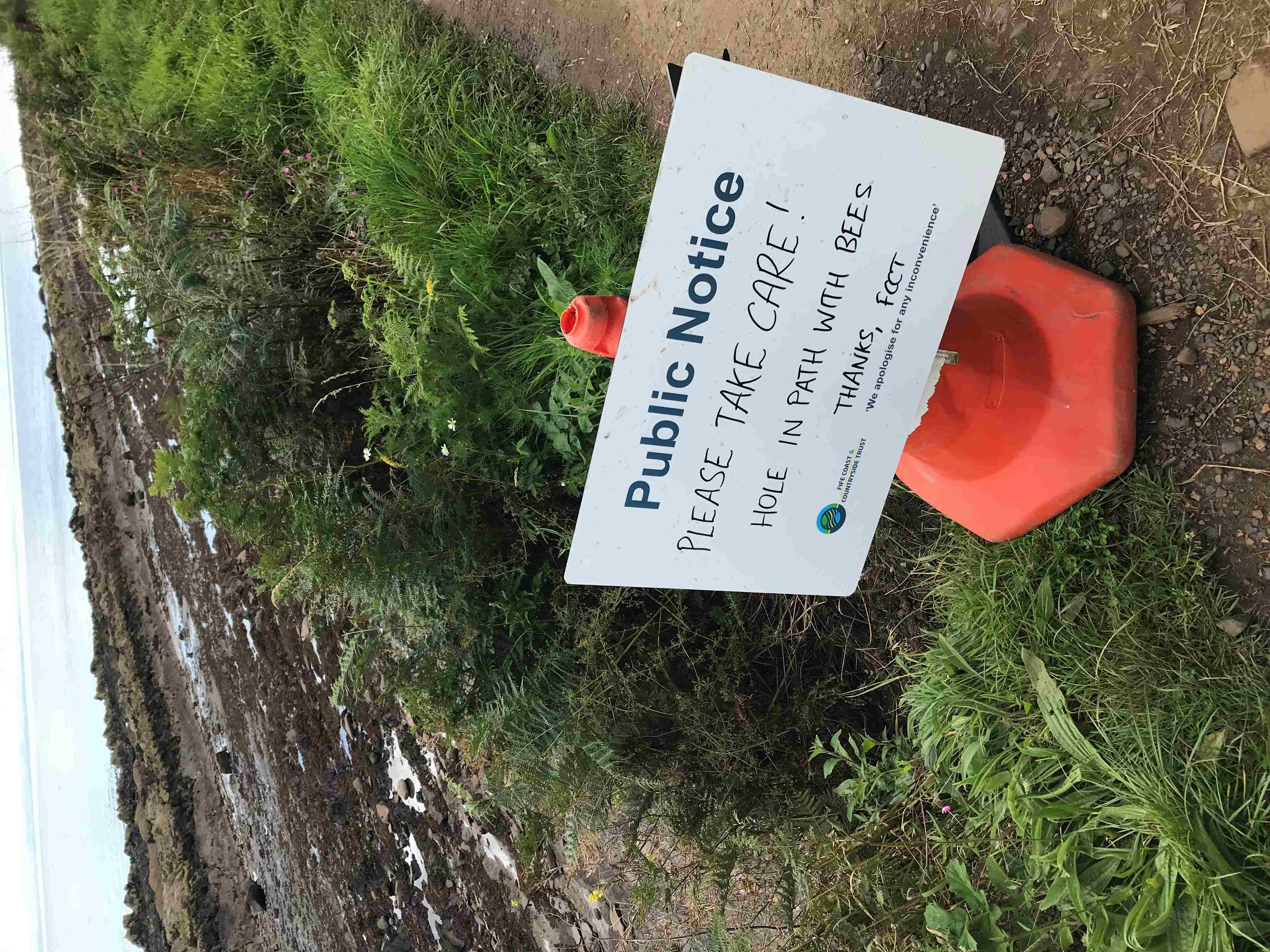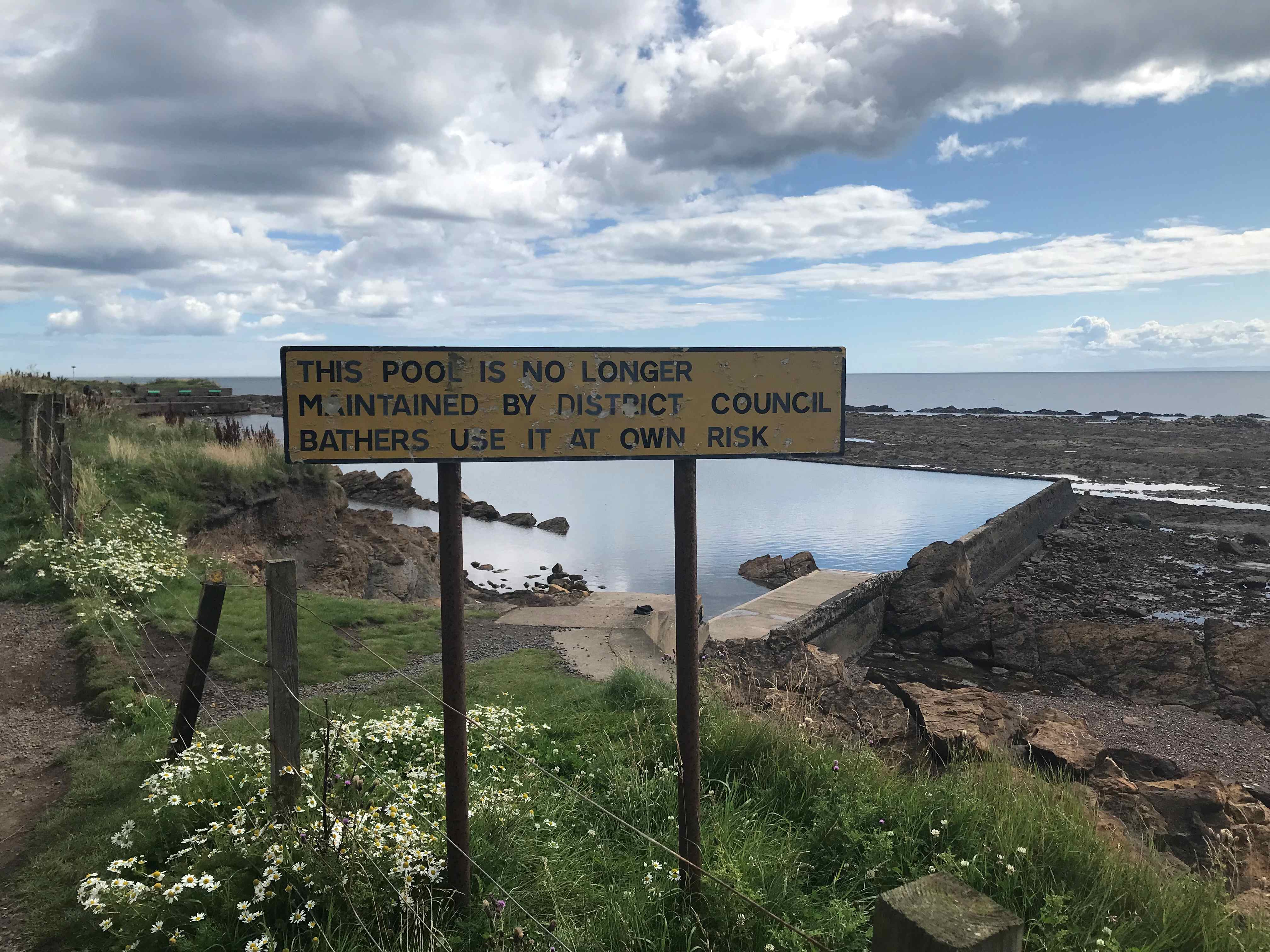Walking the Fife Coastal Path

Was it Capitalism that made me sick? The brick-wall bureaucracy that comes with working as part of a large organisation? Or the cumulative effects of years of low-paid, menial jobs? Whatever it was, I don’t think I’d ever been in more need of a break.
I’d been off work for 4 weeks with stress, a condition that had become apparent when I’d sent another non-collegiate email to one of my many line managers. I’d been working on a Helpdesk at a small university, earning just above minimum wage, forced to endure both the crushingly repetitive tasks that made up my daily routine, and prolonged exposure to the weakeners I worked with, colleagues at higher pay grades who only seemed to come alive when reminding me of my inconsequential status. There had been questions for me to consider – did my responses show that I was too quick to anger? Was I a misanthrope, or merely ground down? – but what was inescapable were the effects of day-after-day of incremental degradation, my intolerance of people who surrendered to hierarchies, and the need to do something about it.
We arrived at Elie late in the afternoon, after a long drive from Alnwick in Northumberland. The only break in the journey had come at a Starbucks in Dreghorn. We were staying on the narrow seafront. There was a cafe overlooking the bay, a pub – The Ship Inn – and an art gallery. The tide was out, the beach flat and early dusk-lit. The scene was simplicity itself, serenely bustling simplicity. So taken was I by the sight that greeted us, it took a while to register that the place was full of second-homers, I mean I’d rarely seen so many nautically-striped shirts and tasselled deck shoes and four-by-fours in such a confined space.

No matter. The next morning, I woke to a cloudless sky, to herring gulls and the sea. I breathed deep. My plan – a plan I’d been nurturing for weeks now – was to find the coastal path that passed through Elie, and walk. Just walk. I didn’t know where it would take me but I didn’t care; all that concerned me was escaping the memory of the psychic violence of the familiar and the full of shit.
From a motor home park-up overlooking another tiny bay, I set off through thick bracken. The path went past a lighthouse, before it reached the shore and opened-up, threading between pastureland, and rocky beaches of thick sand and seaweed.
Here’s someone coming the other way. Path’s a bit narrow…I’ll just wait here.
Good morning!
Good morning!
It was waymarked with signage decorated with puffins and shellfish. Walkers were advised to look out for the Brown Angus butterfly and report any they saw. I peered into the clear light towards the sea: sitting on the shimmering rocks at the very edge of the land, was what looked like a cormorant, and I could feel my face was creased with the exhilaration of it all.
Someone else – look like locals – catch their eye and – hello!
Hello!
About half a mile from Elie I went past a sign for a farm shop, and made a note to return at some point, buy some local honey. But not today. Today I was walking. By now the path had started to rise and fall more expressively. The beaches had been replaced by jagged linear strata of volcanic rock, and the simple restorative effects of the landscape – the grasses and breeze, the seabirds, the space – were embroidered by something more, the contemplative appeal of the human unfamiliar. I passed a derelict, unnamed building, and then, rising over a thicket of thrift and daisies and thistle that was growing at the bottom of a flight of wooden steps, I saw another, the ruin of a castle.
They’re not local, not dressed like that. Where can I go? Not quite enough room there… haven’t I just passed somewhere – ah yes that’ll do…whoah careful! – and smi… oh. Ignore me then. Bit rude.

Round the next rise-and-fall of the path, I saw the witch’s hat of a spire, emerging from a cornfield. It disappeared from view and then I was at the building it belonged to, a robust old church: another sign told me this was the 14th century St Monan’s kirk, the place of worship closest to the sea in all of Scotland.
Morning!
Good morning!
Beautiful day!
It is, it is! You see? That’s the way to do it? Not hard is it?
The path skirted the seaweed-covered foundations of the church before taking me past a couple of cottages and up a narrow flight of steps lined with rosebay and teasels. From there it wound steeply through the town itself, disappearing and reappearing between rows of pastel-coloured terraces and alleyways before dropping down to the working harbour. The tide was out and the boats in the quay sat in mud. One becalmed boat was bright orange and called Defiance.
Obviously posh. A train of posh. Might be nice posh? No, still no eye contact, not from any of them, even though I perched myself on that rock so they could sweep past, like they had some divine right-of-way.
Coming out of St Monan’s were the remains of a saltworks. There wasn’t much left beyond grassy mounds of earth but the windmill that had been used to grind the mineral had been restored and there fellow walkers gathered; there were more people still in the tidal pool at the edge of town – a briny-cold dip, deep-set in the dark volcanic rock – and then I was back on the coastal path proper.
More posh. Crew Clothing, polo shirts. Yep. Thought as much. You’re welcome.
From St Monan’s the landscape changed. On the landward-side of the path were steep banks, dense with vegetation; out to sea, the rocks were no longer black but a rusty deep red. Although there had been butterflies all along the route, now it seemed as though I was walking through clouds of them. I wondered if this had something to do with a change in flora, but I didn’t know enough about the species that surrounded me to make an accurate guess. I felt the same – a wonder-filled curiosity – when I saw a pale yellow bird staring at me from a thicket; it wasn’t until I saw an illustration on the next sign that I realised it had been a yellowhammer. A yellowhammer!
A waymarker said it was ½ a mile to a town called Pittenweem. That would mean I’d walked about 4 miles. On the outskirts of the town was another tidal pool, with seals stretched on the rocks alongside. I climbed to a viewing point where people were looking out for bottlenose whales. It was next to a desultory crazy golf course, which seemed apposite, somehow.

Standing there, I suddenly felt the jolts and undulations of the walk in my legs and decided to head back to Eli. There was time for Pittenweem another day. I’d certainly be back along the path; I’d enjoyed my introduction to Fife, but part of me suspected it still had work to do.
Wankers! Cough-wankers-cough. Too loud? Fuck it, see if I care, you snotty, entitled fuckers!
Come on Ollie!
Yeah, come on Ollie, you little prick!

Charlie Hill
Charlie Hill is a writer from Birmingham. His poetry has appeared in Under the Radar, and he was a regular contributor to Prole.
